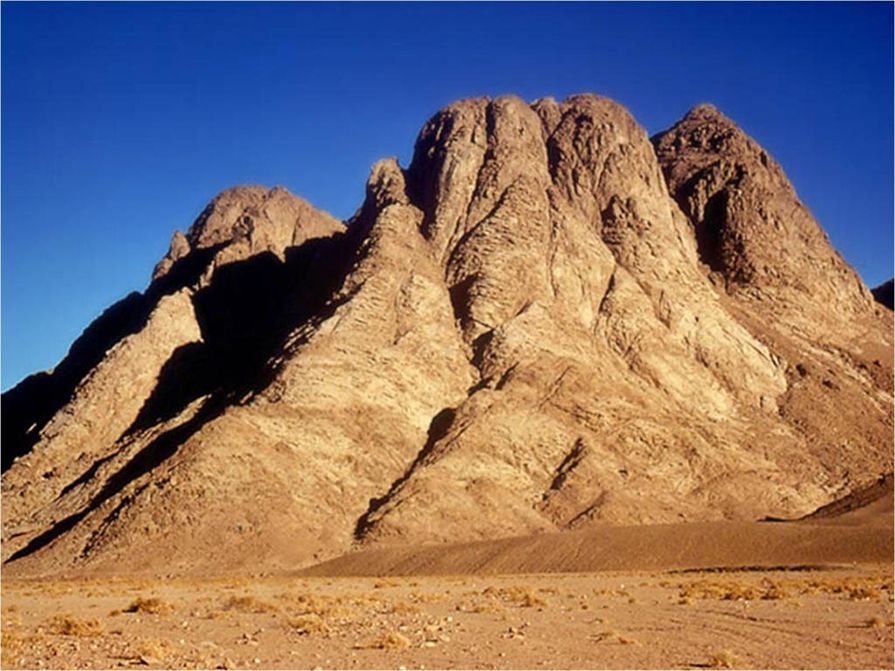Mount Sinai, often shrouded in both mystery and reverence, occupies a sacred and significant place in the Christian faith. Located in the rugged terrains of the Sinai Peninsula, it is more than just a geographical landmark; it symbolizes the profound encounter between the divine and humanity. This essay aims to elucidate the significance of Mount Sinai from a Christian perspective, exploring its geographical context, historical background, and spiritual connotations.
The Sinai Peninsula, a triangular expanse bordered by the Red Sea and the Mediterranean, serves as the backdrop for this sacred mountain. Rising majestically to approximately 2,285 meters, Mount Sinai is flanked by steep cliffs and undulating desert terrain. The harsh environment paralleled with its towering stature offers a striking metaphor for the trials and tribulations often faced in the pursuit of faith. The Sinai region, with its arid landscape, embodies desolation yet invites profound reflection—a place where the finite meets the infinite.
In historical accounts, Mount Sinai is indelibly linked to the narrative of Moses. It is here that, according to biblical traditions, Moses encountered God in a powerful and transformative manner. The mountain is famously known as the place where Moses received the Ten Commandments, a divine mandate that would shape the moral framework for countless generations. The initial glimpses of this interaction depict an awe-inspiring scene—lightning flashes, billowing smoke, and the sound of trumpets reverberating across the valley. This imagery suggests that Mount Sinai is not merely a physical location; it is an intersection of divine authority and human responsiveness.
Visually, Mount Sinai and its surroundings evoke a distinct sense of place steeped in spiritual history. The rugged granite formations and deep valleys resonate with the echoes of ancient stories. As Christians contemplate the geography, it becomes clear that this is not just a mountain of rock; it is a colossal testament to the enduring relationship between God and His people. The stark beauty of the Sinai Peninsula offers a poignant reminder of life’s challenges and the call to rise above them, much like the summit of the mountain itself.
In examining the geographical intricacies of Mount Sinai, one must also consider the various theories regarding its precise location. Scholars have long debated whether the biblical Mount Sinai corresponds to Jebel Musa, often referred to as the actual Mount Sinai, or whether it lies in an alternative site such as Jebel al-Lawz in Saudi Arabia. These discussions hinge around archaeological findings, ancient texts, and the oral traditions that have preserved this sacred geography through the ages. Each proposed location represents a unique interpretation of the divine narrative, a physical embodiment of faith and history interwoven through the collective consciousness of believers.
From a theological perspective, the significance of Mount Sinai erupts beyond its physical attributes. It embodies a pilgrimage of the soul, urging the faithful to seek their own ‘mountain’—an altar where they can encounter God amidst the chaos of life. Just as Moses climbed the slopes to receive divine instruction, Christians today are called to ascend their personal mountains, confronting struggles and embracing moments of revelation. This journey, painful yet transformative, is an intrinsic aspect of the faith experience.
The mountain also represents the paradigm of covenant, reinforced by the gift of the commandments. It is at Sinai that God establishes a community amongst the Israelites, pledging His presence and guidance. This commitment transcends time, inviting the contemporary Christian community to engage in a similar covenant relationship—a call to responsibility that echoes through the millennia. The commandments are not merely ancient edicts; they are a living testament to divine love and justice, resonating within the hearts of believers who strive to emulate such virtues in their daily lives.
The spiritual allure of Mount Sinai further deepens when considering the broader implications of its geography. As part of the Sinai Peninsula, this mountain is situated at the crossroads of three continents—Asia, Africa, and Europe. This unique position imbues it with a transcultural significance, symbolizing unity and the interconnection of disparate peoples. It serves as a reminder that the call to faith is not confined to a singular narrative; rather, it resonates universally across cultures, emphasizing the unity of the divine message.
Moreover, Mount Sinai encourages an inward reflection about the divine-human relationship, particularly regarding the concept of revelation. It invites believers to contemplate the ways in which God communicates through creation, history, and personal experience. Each crack in the rock, each whisper of wind through the valleys, can serve as a vehicle of revelation, beckoning the faithful to listen and respond. In this sense, Mount Sinai acts as a microcosm for the search for meaning, a sacred geography mirroring the quest for understanding that dwells within every heart.
In conclusion, Mount Sinai stands as an enduring emblem of faith, history, and spirituality in the Christian tradition. Its geographical features are not merely points on a map but are imbued with deep meaning that calls the faithful to a greater understanding of their relationship with God. As pilgrims on life’s journey, Christians are encouraged to pursue their own paths to spiritual awakening, inspired by the ancient stories that echo through the ages. Mount Sinai is not simply a place of the past; it is a living emblem of the divine-human encounter, perpetually inviting exploration, introspection, and reverence in the sacred landscapes of the soul.



